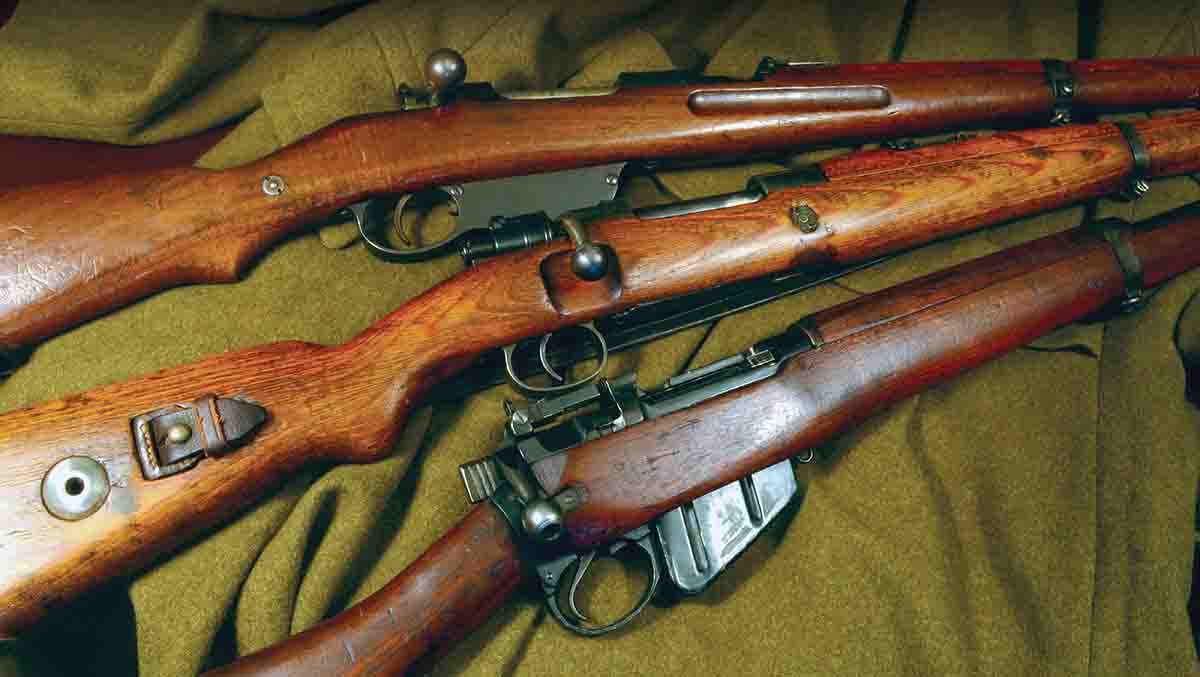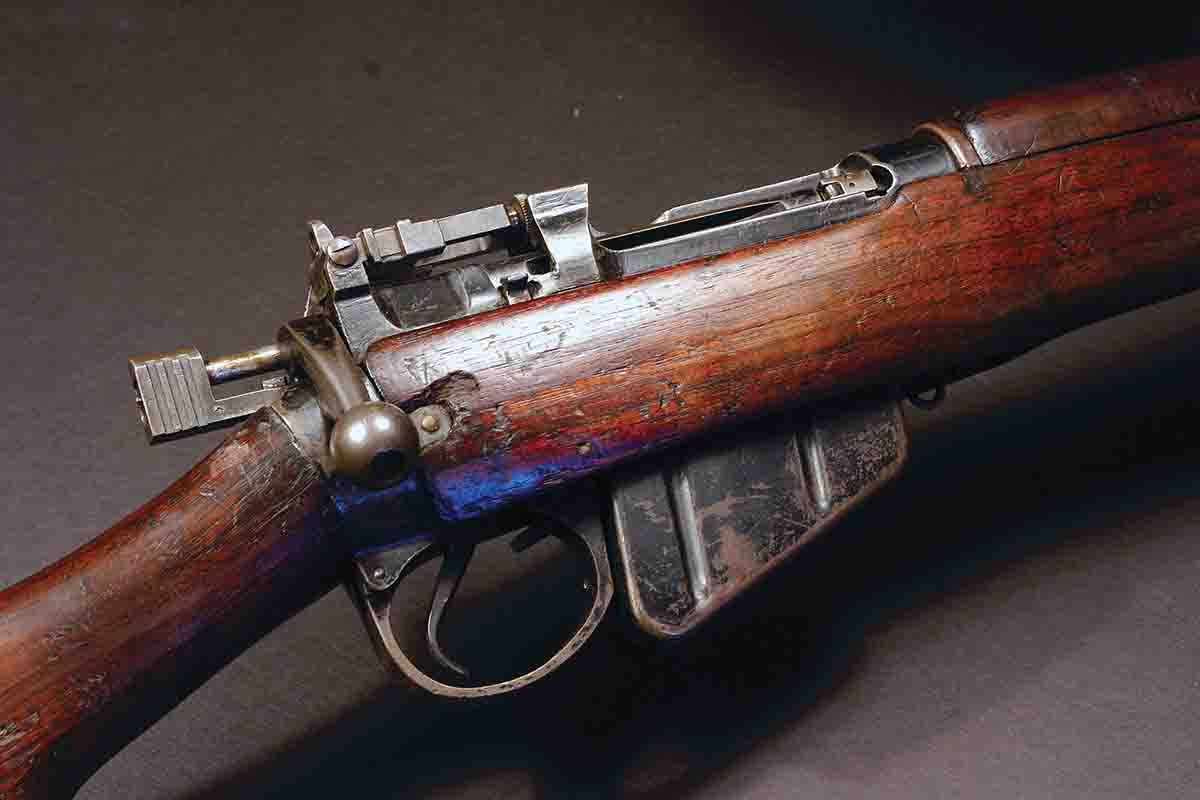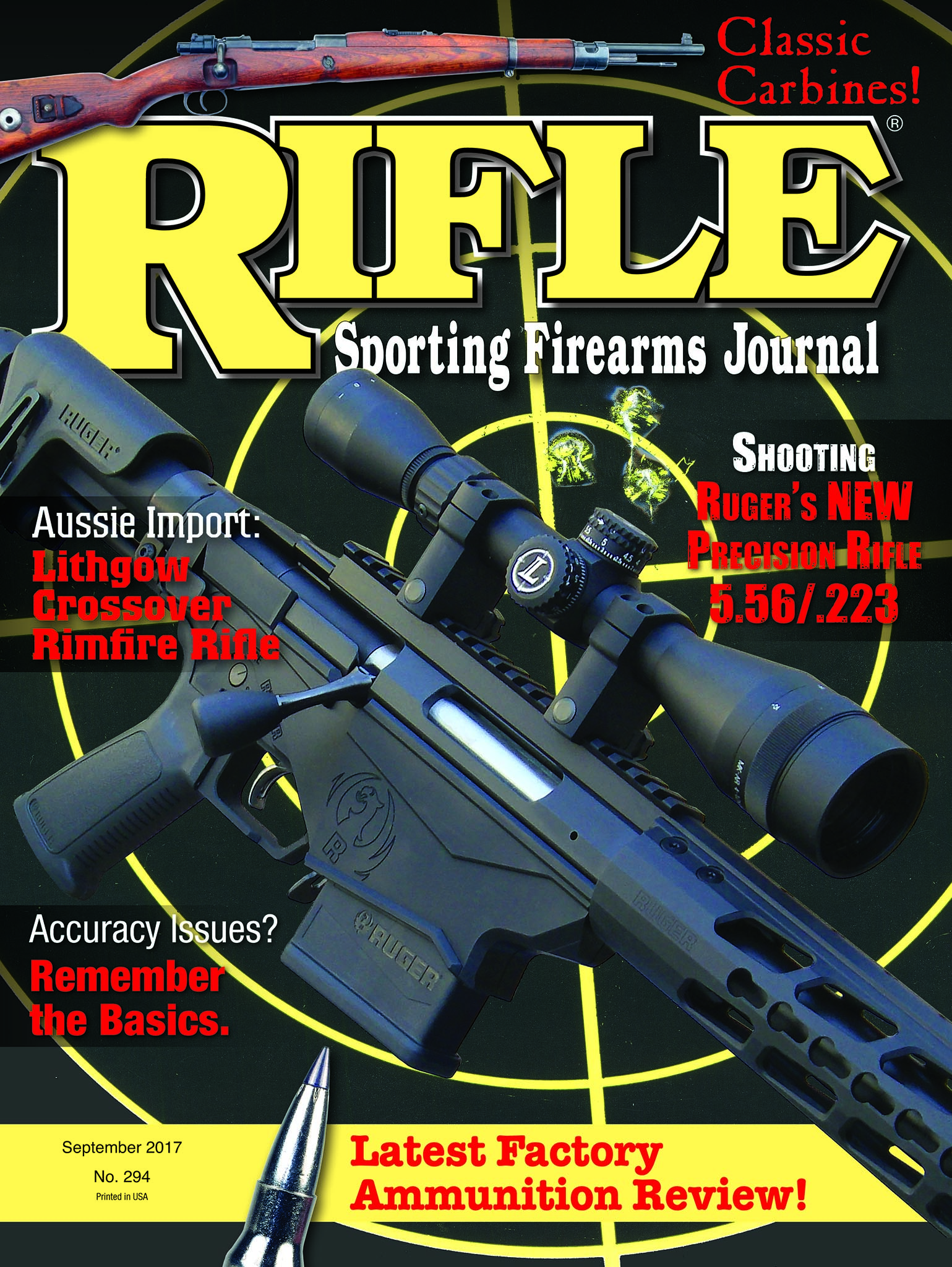Captivating Carbines
Early Forerunners of Today's Short Rifles
feature By: Terry Wieland | September, 17
One irrefutable fact about military rifles over the past 150 years is that they have grown steadily shorter. There are a number of reasons: One is that black powder required a long barrel for maximum velocity; another was their additional duty, with bayonet fixed as a replacement for the ancient pike, for confronting cavalry charges. With the horse gone from the battlefield by 1945 that reason disappeared as well.

As early as 1885, however, military ordnance departments experimented with different rifle lengths for special purposes. As traditional cavalry evolved into mounted infantry, a short rifle was needed for saddle scabbards – hence the cavalry carbine. Another was a shorter, lighter rifle for artillery and mountain troops. Each country approached this in its own way, according to its particular situation. This makes the study of carbines and short rifles all the more interesting, because they reflect changes in both military tactics and battlefield conditions. Obviously, the evolution of military rifles influenced civilian production.
For example, one of the finest civilian mountain rifles of all time is the Mannlicher-Schönauer Model 1903, produced at the famous Waffenfabrik Steyr in Austria. The concept grew out of the short-rifle version of Austria’s military Mannlicher M95 produced for mountain troops and artillery. There was also a variation with additional changes for cavalry. The civilian Mannlicher-Schönauer 1903 stayed in production for almost 75 years, survived two world wars, outlasted its military parent and established a reputation around the world.
As befits the dominant military rifle of the twentieth century, Germany’s Mauser 98 was modified into various short rifles, usually denoted by the addition of a ‘K’ (Karabiner), and this standard-issue rifle grew steadily shorter through the first half of the century. The K98 of World War II was only 43.75 inches in length, compared to 49.25 inches of the Great War Gewehr 98. It was even renamed the Kar. 98k (Karabiner 98 kurz).
Czechoslovakia’s BRNO arms factory went even farther with the Mauser 98 in the 1920s and 1930s, including a shortened version with a 19.29-inch barrel that came to be known as the G33/40. It had an overall length of just 39.1 inches, a trimmed and lightened action and was intended mainly for mountain troops.
Finally, Britain’s Jungle Carbine (No. 5 Mk I), based on the Lee-Enfield No. 4 Mk I, grew out of the need for a shorter, lighter rifle for jungle combat during World War II.
How good are these rifles for their intended purposes? In the case of the Mannlicher and the G33/40, very good indeed. The Jungle Carbine, undeniably the most interesting-looking Lee-Enfield ever made, has a somewhat spotty reputation for accuracy – generally referred to as a “wandering zero.” That aside, any of the three makes a perfectly adequate hunting rifle as is and unaltered.
Mannlicher M95 Stutzen (Short) Rifle

The M95 is chambered for the 8x50R Austrian and fires a 244- grain bullet at 2,030 fps. That is the rated velocity for the full-length rifle, and reportedly it dropped to 1,900 fps in the 19-inch carbine barrel. Ballistically, it is slightly inferior to the G33/40’s 8x57 and the .303 British, but none of the three were intended as sniper rifles, so it’s not a serious shortcoming. The rifle more than made up for it in volume of fire.
Steyr produced several variations of the M95, including a short (Stutzen) rifle for artillery and a cavalry carbine. Improvements in steel pioneered by Steyr allowed both a stainless steel bolt and a thinner, lighter barrel. The Stutzen has a bayonet lug and stacking rod, while the carbine does not. Otherwise, the two are almost identical. The M95 Stutzen weighs 7 pounds, 10 ounces.
The M95 more than proved itself in the Great War, seeing action on two of the most grueling fronts: the Carpathian campaign against the Russians in the winter of 1914-1915, and the three-year campaign in the Alps against Italy. The short rifle was prominent in the Alpine war, being used by elite Austrian mountain troops that were almost always greatly outnumbered by the Italians, fought in some of the worst winter conditions and held their own through the entire series of Isonzo battles that culminated in the Italian disaster at Caporetto.
The M95 sometimes froze in subzero temperatures and needed to be “thawed” over open fires, but that tendency was common to most rifles. In terms of sheer firepower, as long as the ammunition held out, an Austro-Hungarian soldier with an M95 could lay down a barrage unequaled by either of the other two carbines. In fact, two soldiers working as a team could almost equal a machine gun in establishing a beaten zone.
G33/40 (Czech Mauser 98)
The arsenal at BRNO, in the Czech province of Moravia, was established in 1919 to produce Mauser 98 rifles for the new Czech army to replace the Mannlicher M95. In 1933, BRNO modified the standard ’98, shortening the barrel by 5 inches and trimming steel from the action to reduce weight. After the German takeover in 1939, the BRNO factory continued to make arms for the Wehrmacht. Its short Mauser was designated the G33/40 and was slated for issue to mountain troops.

While the G33/40 is shorter than the M95 Stutzen by about .5 inch, it weighs 8 pounds, 4 ounces – more than a half-pound heavier.
Its 8x57 JS cartridge is the most modern and powerful of the three, firing a 154-grain bullet at 2,880 fps. In the short-barreled G33/40, velocity is around 2,750 fps. The G33/40 is noted for being very accurate and makes good use of the 8x57 JS’s ballistic capabilities. It has a magazine capacity of five rounds and uses standard K98 stripper clips. Because of its turnbolt mechanism and the awkwardness of reloading even with clips, the G33/40 is a distant third when it comes to rapid firing and laying down a barrage.
Lee-Enfield Jungle Carbine
The British Lee-Enfield No. 5 Mk I (generally known as the Jungle Carbine) originated with a request in June 1943 to the Infantry Weapons Development Committee for a lighter, more compact rifle for use in the jungle conditions of the Far East. Because combat ranges were shorter, accuracy requirements were modified from those for the No. 4 Mk I.

The Jungle Carbine has a short, 20-inch barrel, including a conical flash suppressor and a lightened action. Its rear sight is graduated to 800 yards instead of the standard 1,300 yards of the No. 4 Mk I. It weighs 7 pounds, 5 ounces, making it the lightest of the three carbines mentioned. The buttstock is fitted with a recoil pad that is such in name only, but eliminating the iron or brass buttplate of earlier rifles reduces weight slightly.
In use, troops quickly detected the carbine’s “wandering zero.” Subsequent tests indicated this was probably due to milled cuts in the receiver, allowing flexing at the time of firing. This fault is not universal – in fact, some question whether it ever existed, although British War Office records certainly indicate that it did. It was never severe enough to seriously impair the Jungle Carbine’s effectiveness, and troops loved the little rifle.
In volume of fire, the Jungle Carbine’s 10-round magazine, and the ability to carry spare loaded magazines, would put it only slightly behind the Mannlicher M95, where fire can be sustained as long as the ammunition packets hold out. At some point, a British soldier would have to stop shooting and reload magazines. British .303 ammunition was issued in stripper clips similar to the Mauser’s. These can be used with the magazine in place, so the Lee-Enfield’s firepower would never drop below that of the Mauser.
As for rate of firing, the Lee-Enfield action is legendary for its smoothness and extraordinary speed of operation in the hands of trained infantrymen. At the Battle of Mons in 1914, German troops confronted by the British Expeditionary Force believed they were facing machine guns, not rifles in the hands of ordinary infantry.

Introduced in 1944 and discontinued in 1947, the No. 5 Mk I had a remarkably short service life. It was used by British troops post-1945 in suppressing the communist insurrection in Malaya. Compared with the No. 1 Mk III and No. 4 Mk I, relatively few (about 250,000) were made. Because of its flash suppressor, the No. 5 Mk I had a unique bayonet with a Bowie-type blade and knife grip that also served admirably as a combat knife. Like the rifle, jungle-carbine bayonets are rare and expensive.
Comparing Carbines
There is little argument that, based on accepted standards of quality, the G33/40 is the best rifle of the three, and current collector prices reflect that. Where an M95 short rifle in good condition can be had for about $300, the jungle carbine is twice that ($500 to $600) and the G33/40 is priced up to $2,000.
As a battle rifle, where speed and firepower count, both the M95 and the Jungle Carbine outdistance the Mauser by a fair bit. For accurate long-range shooting, however, the G33/40 wins hands down. None of the three, however, was intended for sniping, so this is rather a moot point. In terms of durability, given the normal range of conditions, it’s impossible to say which rifle wins or loses. The Jungle Carbine’s magazine is more vulnerable than the others, which could put it out of action, either through loss or damage. Other than that, there is no specific weakness for any of them, and all have put in admirable performances under dreadful conditions that range from arctic cold to tropical heat and torrential rain.
Each of the three carbines was the last of its line, ultimately replaced by completely new rifles The M95 was superseded in Austria by the Mauser 98 (mostly for political reasons), the G33/40 by a late-war semiautomatic and the Jungle Carbine, postwar, by the FN L1.
Each of them, in its own way, pointed to a future where the standard infantry rifle was short, light, handy and possessed enormous firepower. Each rendered the long-rifle versions of its own design family obsolete, although it didn’t show immediately. Today, if an entire army was outfitted with one or the other of these carbines, it would not be considered unusual or particularly unsuitable.
Former uses for the standard infantry rifle, such as sniping or laying down a barrage, have been taken over by specialized sniper rifles on the one hand and by machine guns on the other. This has allowed standard-issue infantry rifles to become shorter, with less emphasis on extreme-range shooting and more on close combat and maximum firepower. Although they didn’t know it at the time, the designers at Steyr, BRNO and Enfield were pointing the way to the future.


